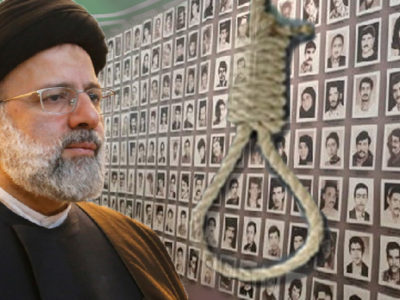 A victim of state-sponsored terrorism has a different take on the death of the Iranian leader.
A victim of state-sponsored terrorism has a different take on the death of the Iranian leader.
The minute I heard about the death of Ali Akbar Hashemi Rafsanjani, the number two man in the theocracy ruling Iran for decades, I had a flashback to Istanbul, Turkey, on March 14, 1990.
No, Rafsanjani was not in Turkey on that day. But his henchmen were. And that is when I encountered them directly.
I am a member of the National Council of Resistance of Iran, the coalition of Iranian opposition movements, with the People’s Mojahedin Organization of Iran, the principal Iranian opposition movement at its core.
It was mid-afternoon and I was sitting next to the driver taking me to the Istanbul airport. As the driver and I were discussing ways to evade the traffic jam that was caused by an accident, a car carrying four men suddenly blocked our path. And then came a bang. Another car pinned us in from behind.
Seconds later, two strange men, one from the front car and one from the car behind, jumped out with automatic weapons. As the assailants approached, I had a few seconds to decide how to avoid becoming sitting ducks. I opened the car door and rushed at them carrying only a small Samsonite briefcase. One of the men fired nine bullets; the other man’s gun jammed. I was shot in the chest and stomach and gravely wounded. The assailants fled. I fell unconscious, my battle for survival just begun.
Luckily, we were close to Istanbul’s International Hospital, to which I was rushed. I was in a deep coma for 40 days, and unconscious for three months. With 80 percent of my liver gone, I was written off by my doctors several times. One bullet hit very close to my heart. I went through 14 operations and was given 154 pints of blood. In one of the operations, the odds for my survival were one to one hundred.
The assailants were acting at the behest of the clerical regime, the main state sponsor of terrorism. Ironically, as later became evident, the hitmen weren’t after me. The real target was Mohammad Mohaddessin, chairman of the Foreign Affairs Committee of the NCRI, as Iranian state radio confirmed a few days later.
When the regime found out that they have failed, they tried twice to finish me off in the hospital. Once, assassins disguised as Turkish police approached the hospital; by pure coincidence, the Turkish police arrived at the hospital at the same time and foiled the plot. Another time, two men pretended that they were my friends and found my room in the hospital. In reality, they were the mullahs’ men. Once again, I was fortunate; several real friends came to visit me at the same time, and the would-be murderers fled.
Actually, I am one of very few who has survived the mullahs’ assassination attempts.
All this took place while Ali Akbar Hashemi Rafsanjani was the clerical regime’s president.
It is very relevant and pertinent to know his real legacy. While some in the West have portrayed him as a “moderate,” “pragmatic”, etc. for the past three decades, in reality he was cut from the same cloth as the rest of the mullahs.
The assassination of Iranian dissidents abroad and the regime’s terror attacks skyrocketed during Rafsanjani’s tenure as the president and as the head of the Supreme National Security Council, a body that oversees and authorizes the regime’s terrorist operations.
Professor Kazem Rajavi, Iran’s most renowned human-rights activist, was gunned down in broad daylight by the mullahs’ hitmen while driving near his house in Geneva in 1990. The Swiss implicated 13 Iranian officials with passports stamped “Special Mission.” Several Iranian Kurdish leaders were murdered in Vienna in 1989 and in Berlin in 1992. The list goes on. The mullahs’ terror targets were not only Iranians. The FBI established undeniable evidence that Tehran had masterminded the bombing of Khobar Towers in Saudi Arabia in 1996, resulting in the deaths of 19 American servicemen. The Jewish center in Argentina was bombed in Buenos Aires on July 18, 1994. Rafsanjani was directly implicated by Interpol.
Rafsanjani played a key role in the massacre of 30,000 political prisoners, primarily activists of the MEK, in summer of 1988, an incident that has been described as one of the worst crimes against humanity since the Second World War.
Nor was Mr. Rafsanjani’s mischief-making limited to terrorism and murder at home. The secret drive to acquire nuclear weapons got a real boost during his tenure, particularly after the first Persian Gulf War in 1991.
Make no mistake, Rafsanjani had no impulse toward moderation. But his death was a major development insofar as it pertains to the future of the theocracy ruling Iran. As Maryam Rajavi, President-elect of the National Council of Resistance of Iran underscored, with the death of Rafsanjani, “one of the two pillars and key to the equilibrium of the regime has collapsed and the regime in its entirety is approaching overthrow.” Rafsanjani who had always been the regime’s number two, acted as its balancing factor and played a decisive role in its preservation.
After Rafsanjani’s death, the regime will lose its internal and external equilibrium. In light of other crises Tehran faces, that means the outlook for the regime’s future has become significantly bleaker.
Hossein Abedini is a member of the Parliament in exile of the Iranian resistance (NCRI) and belongs to the Foreign Affairs Committee of the National Council of Resistance of Iran.








